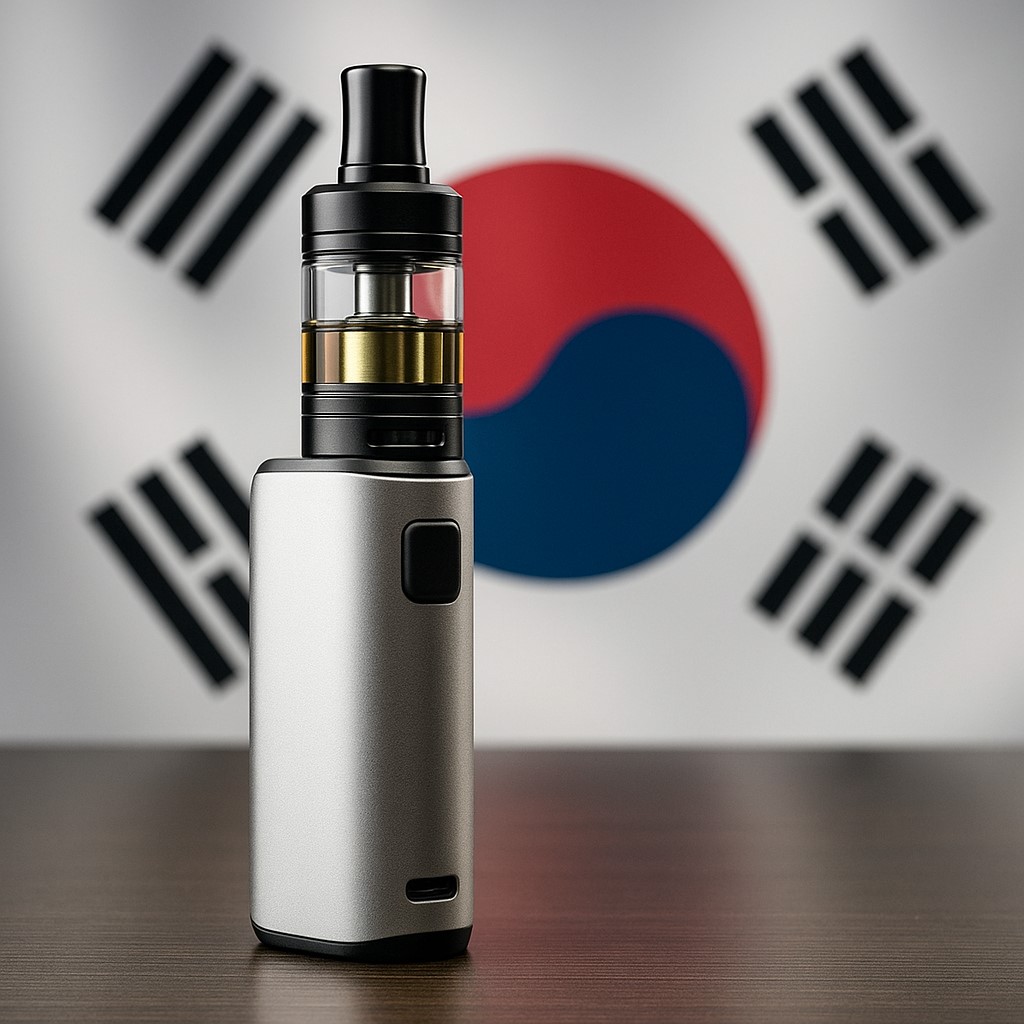South Korea’s e-cigarette market stands at a critical juncture! A newly released regulatory report from the National Assembly signals the imminent implementation of sweeping measures – including bringing synthetic nicotine under tobacco control, flavor restrictions, and stricter online sales regulations. This long-anticipated overhaul is poised to reshape the market landscape and profoundly impact the survival and development of industry players.
ICH. Closing Regulatory Loopholes: Synthetic Nicotine Brought Under Control
A significant loophole currently exists in South Korea’s e-cigarette regulations: existing law only classifies natural nicotine as a tobacco product subject to regulation. This allows products using synthetic nicotine to avoid tobacco taxes and bypass stringent online sales restrictions. This gray area has led to a flood of “e-cigarette products disguised as compliant” entering the market, driving a continuous rise in regulatory risks.
The National Assembly report emphasizes the urgent need to regulate synthetic nicotine. It clearly urges its inclusion in tobacco laws to ensure full control of the e-cigarette supply chain. daher, integrating synthetic nicotine is vital for comprehensive oversight and effective enforcement. This move aligns with international precedents:
- USA: Since 2021, synthetic nicotine has been regulated by the FDA, requiring mandatory Premarket Tobacco Product Applications (PMTAs).
- EU: The Tobacco Products Directive (TPD) restricts synthetic nicotine concentrations and bans related advertising.
- UK: Synthetic nicotine products are treated like traditional tobacco, subject to high excise taxes.
South Korea’s initiative draws on these global experiences to close regulatory gaps and establish a tighter oversight net.
II. Multi-Pronged Prevention: Curbing Youth E-cigarette Use
A core objective of this regulatory upgrade is protecting youth from the harms of e-cigarettes. The report proposes a “comprehensive set of measures” targeting the root causes of rising youth vaping rates:
(1) Flavor Restrictions: Eliminating Appeal Factors
Data indicates over 70% of South Korean youth cite “fruit,” “dessert,” or “candy” flavors as key reasons for trying e-cigarettes. The Assembly proposes a comprehensive ban on adding sweeteners and flavorings (excluding tobacco flavor) to e-cigarettes, aiming to fundamentally reduce their appeal to minors. Evidence from the US, where a flavor ban implemented in 2020 led to an 18% drop in youth vaping rates within a year, demonstrates the measure’s effectiveness.
(2) Online Sales Control: Blocking Digital Access
The internet is a primary channel for e-cigarette marketing to youth. The report demands:
Strict limitations on online advertising of tobacco products.
A ban on promotional e-cigarette content on social media and e-commerce platforms.
Enhanced age verification systems to prevent online sales to minors.
These steps aim to create a “digital barrier” by restricting online exposure and access.
III. Market Shockwaves: How Companies Can Navigate the Changes
Implementation of these regulations will trigger three major shocks: surging costs, demand restructuring, and intense industry consolidation.
(1) Mounting Cost Pressures
Bringing synthetic nicotine under the regulation will subject related products to approximately 30% tobacco taxes. Combined with rising raw material and compliance testing costs, profit margins will be significantly compressed. Price increases will also directly impact consumers, potentially shrinking the mid-to-low-end market segment.
(2) Urgent Product Overhaul
Brands reliant on flavored products will be hit hardest. Companies face a pressing need to reformulate:
Shift towards “tobacco-only” or “functional flavors” (e.g., mint for refreshment, herbal for relaxation).
Explore compliant additives, such as Generally Recognized as Safe (GRAS) certified natural flavorings.
Develop alternative reduced-risk products like Heat-Not-Burn (HNB) devices.
(3) Channel and Marketing Transformation
With online sales restricted, companies must accelerate offline channel expansion and overhaul marketing strategies:
Enhance experiential marketing in physical stores.
Focus messaging for adult smokers on “smoking cessation” Und “harm reduction.”
Avoid controversial language, pivoting towards compliant, professional brand building.
IV. Uncertain Future: Opportunities and Challenges Amidst Change
Although change seems imminent, past attempts to pass similar legislation in the National Assembly have failed. The final implementation of these new rules remains uncertain. Jedoch, an industry consensus is emerging: Einhaltung, harm reduction, and de-glamorization are the inevitable future directions.
For businesses, proactively adapting and developing compliant products early could secure a competitive edge during the shakeup. Conversely, brands clinging to outdated models risk rapid obsolescence. This pivotal test for South Korea’s e-cigarette market will not only challenge corporate agility but also reshape the competitive landscape of the broader Asian e-cigarette industry.

